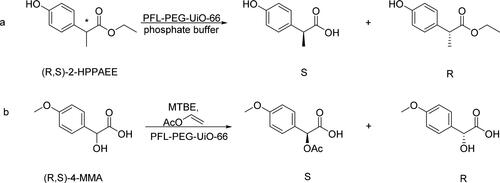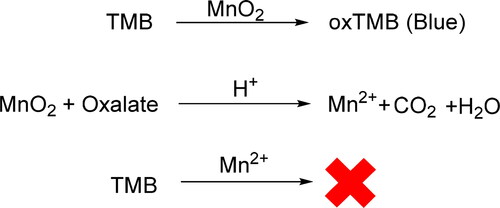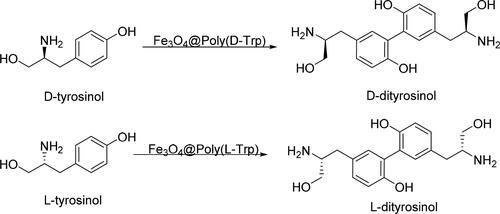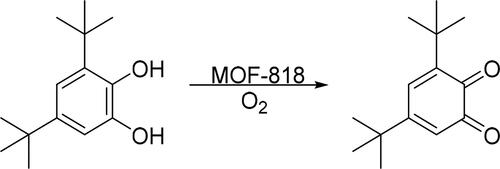Figures & data
Table 1. Advantages and disadvantages of enzyme immobilization and nanozyme.
Table 2. The applications and performances of nanomaterial immobilized enzymes.
Table 3. Nanomaterials with enzyme-like activities.

![Figure 2. Recent applications of nanozymes and proposed mechanisms (A: substrate; POD: peroxidase; CAT: catalase; OXD: oxidase; SOD: superoxide dismutase.). Reprinted with permission from Ref. [Citation21], Huang, Y., Ren, J. and Qu, X., 2019. Nanozymes: Classification, catalytic mechanisms, activity regulation, and applications. Chemical Review, 119(6), pp.4357–4412.](/cms/asset/81b9b122-3fdf-42f9-887e-369debfe5fae/tbeq_a_2054727_f0002_c.jpg)
![Figure 4. The synthesis of 2H-chromenes. Reprinted with permission from [Citation34].](/cms/asset/a20fa228-a999-4374-8ca6-90b82f2ef6a1/tbeq_a_2054727_f0004_c.jpg)
![Figure 6. The detection of chloramphenicol (CAP). Reprinted with permission from Ref. [Citation38].](/cms/asset/9ed73b54-5eae-474f-ba9f-85e7fffe273f/tbeq_a_2054727_f0006_c.jpg)


![Figure 11. Schematic illustration shows synergetic multimodal for tumor therapy by Au-Ag@HA nanoparticles. Reprinted with permission from [Citation64].](/cms/asset/eeb78c81-ebb7-491a-a5dc-935214e09046/tbeq_a_2054727_f0011_c.jpg)







